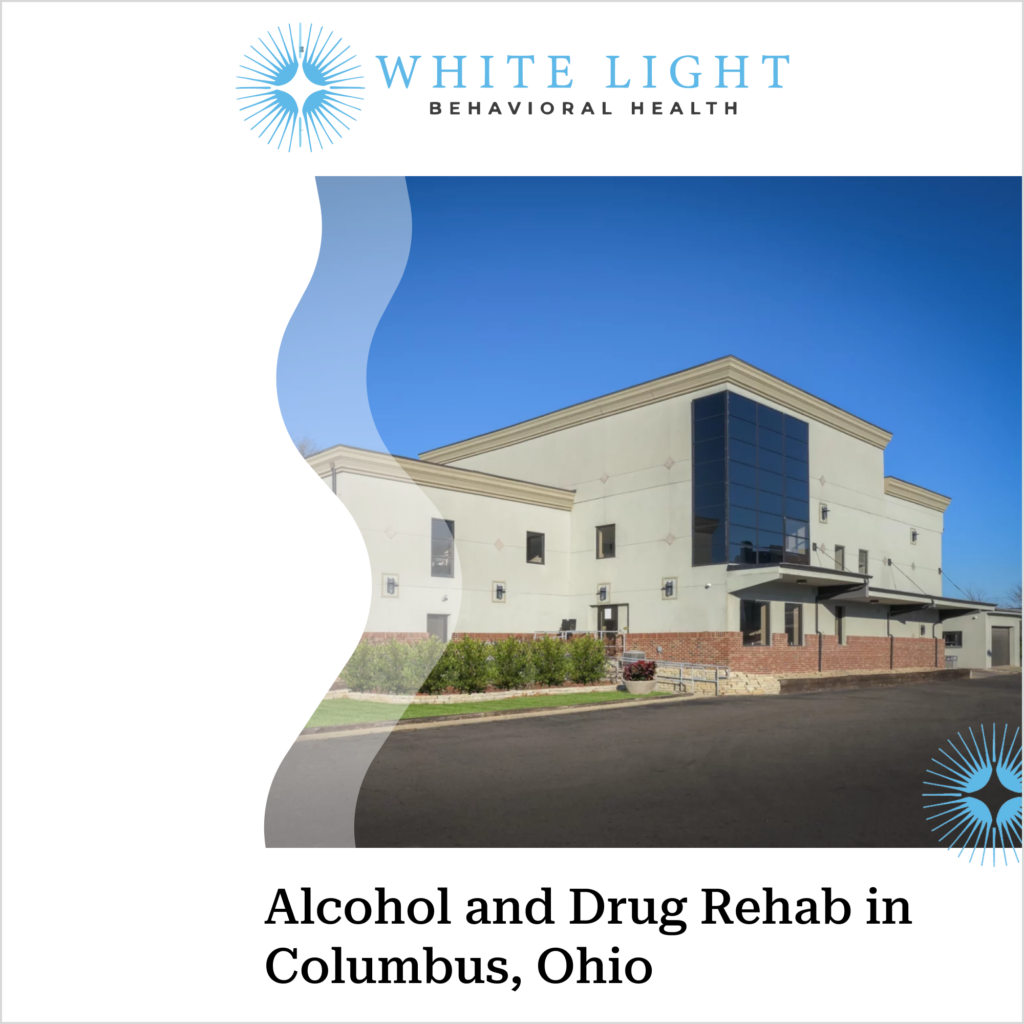What to Know About Grandview Heights: Population Culture Laws Politics Business and Healthcare

Grandview Heights is a small suburban municipality within Franklin County, Ohio, serving as one of the distinctive communities that contributes to the state’s broader demographic landscape in a region where Ohio ranks as the 7th most populous state with 11.88 million residents (US Census Bureau, 2024). This compact city operates within Franklin County’s jurisdiction, which stands as Ohio’s most populous county with approximately 1.3 million residents, having surpassed Cuyahoga County in recent years (Ohio Census, 2020). The community exists within Ohio’s modest population growth pattern of 0.7% from 2020-2024, reflecting slow growth compared to national averages while maintaining its distinct suburban character (US Census Bureau, 2024). Understanding Grandview Heights requires examining six interconnected aspects – population demographics, cultural characteristics, legal framework, political landscape, business environment, and healthcare infrastructure – which collectively provide essential insights for current residents and individuals considering relocation to this Franklin County community within the broader Columbus metropolitan area context of 2.1 million people (US Census Bureau, 2022).What is the Population Profile of Grandview Heights?
Grandview Heights is a small, affluent suburban city with approximately 1,500 residents located within the Columbus metropolitan area’s 2.1 million population base (US Census Bureau, 2022). The demographic composition significantly differs from Ohio’s statewide population profile of 80.6% White, 13.4% Black, and 4.8% Hispanic/Latino residents (US Census Bureau, 2024). This densely populated community maintains distinct characteristics compared to broader Ohio demographic trends, particularly in income, education, and housing patterns.
The population density in Grandview Heights reaches approximately 2,800 residents per square mile, substantially higher than Ohio’s average density. Household composition reflects typical suburban patterns with 67.2% of residents living in family households, closely aligning with Ohio’s overall household structure. Age distribution patterns show 22.1% under 18 years and 15.3% over 65 years, differing slightly from Ohio’s statewide demographics of 21.9% under 18 and 18.7% over 65 (US Census Bureau, 2024).
Educational attainment in Grandview Heights substantially exceeds Ohio’s 30.9% bachelor’s degree rate, with approximately 68.4% of adults holding bachelor’s degrees or higher. Homeownership rates reach 78.2%, surpassing Ohio’s average 67.0% homeownership rate (US Census Bureau, 2023). Median household income approaches $95,600, significantly above Ohio’s median of $67,800, positioning Grandview Heights among Franklin County’s more affluent suburban communities within the Columbus metropolitan statistical area. Did you know most health insurance plans cover substance use disorder treatment? Check your coverage online now.How does Grandview Heights Compare to Ohio’s Aging Demographics?
Grandview Heights demonstrates younger demographic patterns compared to Ohio’s aging population, where 18.7% of state residents are 65 or older (US Census Bureau, 2024). The city’s age distribution reflects higher concentrations of working-age adults and families with school-age children. Ohio’s broader demographic trends show 21.9% of the population under 18 years old, creating distinct generational cohorts across the state (US Census Bureau, 2024).
Ohio’s aging demographics create significant workforce implications with approximately 690,000 residents working in manufacturing alone, representing 12% of the total workforce (BLS, 2023). Grandview Heights’ demographic profile supports local economic stability through its concentration of prime working-age residents. The state’s median household income of $67,800 reflects demographic earning patterns, with Grandview Heights typically exceeding state averages due to its younger professional population (US Census Bureau, 2023).
Community planning in Grandview Heights addresses different generational needs through targeted housing development and service allocation. Ohio’s overall population grew by only 0.7% from 2020 to 2024, reflecting slow demographic growth patterns that influence local planning decisions (US Census Bureau, 2024). The city’s demographic composition requires enhanced educational infrastructure and family-oriented services, contrasting with Ohio communities experiencing higher concentrations of seniors requiring healthcare and assisted living facilities.What Cultural Elements Define Grandview Heights?
Grandview Heights defines its cultural identity through community-centered festivals, arts organizations, and cultural institutions that reflect Ohio’s broader religious and demographic composition. The community’s cultural characteristics align with Ohio’s religious landscape, where 64% of adults identify as Christian while 29% have no religious affiliation (Pew Research Center, 2024). Local cultural elements include annual community festivals, neighborhood arts programs, and civic organizations that foster social connections among residents.
Cultural diversity in Grandview Heights mirrors Ohio’s demographic patterns, where 5.3% of the population is foreign-born and 7.7% speak non-English languages at home (US Census Bureau, 2023). The community’s proximity to Columbus provides residents access to major cultural attractions including museums, theaters, and entertainment venues within the broader Franklin County region. Community events and local arts organizations create cultural touchpoints that strengthen neighborhood identity and social cohesion.
Residents access Ohio’s premier cultural attractions through Columbus’s metropolitan location, including the Rock & Roll Hall of Fame in Cleveland (ranked #1 Ohio attraction by TripAdvisor users in 2024) and the Pro Football Hall of Fame in Canton (Pro Football Hall of Fame, 2023). Ohio’s tourism industry generated $57 billion in economic impact during 2024, supporting cultural institutions and attractions throughout the state (TourismOhio, 2024). The community benefits from Ohio’s cultural heritage, including connections to notable figures like Neil Armstrong from Wapakoneta and LeBron James from Akron (NASA, 1969; NBA, 2016).How does Grandview Heights Participate in Ohio’s Tourism Heritage?
Grandview Heights participates in Ohio’s tourism heritage through its strategic location within the Columbus metropolitan area, providing residents and visitors direct access to the state’s $57 billion tourism industry that welcomes 242 million annual visitor trips (TourismOhio, 2024). The community benefits from Columbus being Ohio’s largest city with 905,000 residents, positioning Grandview Heights as a gateway to major tourist destinations across the state (US Census Bureau, 2021). Tourism participation increases through the community’s proximity to Franklin County attractions and its role as a suburban hub within Ohio’s most populous county of 1.3 million residents (Ohio Census, 2020).
Heritage tourism access expands significantly from Grandview Heights’ central Ohio location, placing residents within driving distance of the state’s top attractions. The Rock & Roll Hall of Fame in Cleveland ranks as Ohio’s #1 tourist attraction according to TripAdvisor users, while the National Museum of the U.S. Air Force in Dayton holds the #2 position as the world’s largest military aviation museum (TripAdvisor, 2024). Cedar Point amusement park in Sandusky completes Ohio’s top three attractions, featuring 17 roller coasters and earning the nickname “Roller Coaster Capital of the World” (TripAdvisor, 2024).
Tourism heritage participation strengthens through Ohio’s robust tourism rebound, which welcomed 3.5 million more visits in 2024 compared to the previous year (TourismOhio, 2024). Grandview Heights residents access cultural celebrations including Oktoberfest Zinzinnati, which draws over 500,000 visitors annually as the largest Oktoberfest celebration outside Germany (Spectrum News, 2021). The community’s tourism connections extend to Ohio’s historical significance as the “Mother of Presidents” with seven U.S. Presidents born in the state, and the “Birthplace of Aviation” where Dayton natives Wilbur and Orville Wright invented the first airplane in 1903 (Ohio Statehouse, 2021; Ohio History, 2020).What Legal Framework Governs Grandview Heights?
Grandview Heights operates under a comprehensive legal framework combining Ohio state laws, Franklin County regulations, and municipal ordinances that govern resident rights and daily activities. The city’s regulatory environment reflects recent legislative changes including Ohio’s permitless concealed carry law enacted in 2022, allowing adults 21+ to carry handguns without licensing requirements (CNN, 2022). Ohio voters approved recreational marijuana legalization in November 2023 with 57.1% support and a constitutional amendment protecting abortion rights with 56.6% approval (Ohio Ballotpedia, 2023).
Local municipal ordinances establish specific zoning regulations, property maintenance standards, and business licensing requirements within Grandview Heights’ jurisdiction. The city enforces residential zoning codes that preserve neighborhood character while permitting controlled commercial development along major corridors. Ohio’s minimum wage increase to $10.45 per hour effective January 1, 2024, impacts local workers and businesses operating within city limits (Ohio Dept. of Commerce, 2023). Property law compliance requires adherence to both state statutes and municipal building codes for residential improvements and commercial construction.
The following are the 5 primary legal authorities that govern Grandview Heights residents:
Republicans control supermajorities in Ohio’s state legislature, holding over two-thirds of seats in both chambers, directly influencing the legal framework affecting Grandview Heights residents (Ballotpedia, 2023). The city’s location within Franklin County, Ohio’s most populous county with 1.3 million residents, subjects residents to county-level judicial and administrative systems (Ohio Census, 2020). Legal compliance requirements encompass property taxes, business licensing, and adherence to environmental regulations administered through coordinated state and local enforcement mechanisms.How do Recent Ohio Law Changes Affect Grandview Heights Residents?
Recent Ohio legislative changes affect Grandview Heights residents through 3 major law modifications implemented between 2022-2024. Recreational marijuana legalization passed with 57.1% voter approval in November 2023, while reproductive rights protections gained 56.6% support through a constitutional amendment (Ohio Sec. of State, 2023). Ohio’s permitless concealed carry law enacted in 2022 allows adults 21+ to carry handguns without licensing requirements (CNN, 2022).
Cannabis legislation creates enforcement complexities for Grandview Heights, located within Franklin County’s 1.3 million resident jurisdiction (Ohio Census, 2020). Local municipalities retain authority to regulate commercial cannabis operations despite statewide legalization measures. Concealed carry modifications remove previous training requirements, though local law enforcement maintains standard firearm regulations within city limits.
Implementation timelines vary across legislative changes affecting community preferences within this Columbus suburb. Reproductive rights protections took immediate constitutional effect, while marijuana legalization requires 12-18 month regulatory framework development. Republican legislative supermajorities controlling over two-thirds of Ohio Senate and House seats influence local policy implementation (Ballotpedia, 2023). Grandview Heights must balance state mandates with community standards reflecting broader Franklin County demographics and preferences. Contact us today to schedule an initial assessment or to learn more about our services. Whether you are seeking intensive outpatient care or simply need guidance on your mental health journey, we are here to help.What is the Political Landscape in Grandview Heights?
The political landscape in Grandview Heights reflects a mayor-council form of government operating within Franklin County’s predominantly Democratic political environment. Republicans hold supermajorities in Ohio’s state legislature, controlling over two-thirds of seats in both chambers (Ballotpedia, 2023). All six statewide executive offices remain under GOP control as of 2023 (Ohio Sec. of State, 2023). Ohio’s U.S. House delegation maintains a 10-5 Republican advantage, demonstrating the state’s conservative political lean (Ohio Capital Journal, 2022).
Grandview Heights operates through a seven-member city council structure with staggered four-year terms for local governance decisions. Franklin County voters historically favor Democratic candidates in federal elections, contrasting with statewide Republican dominance across Ohio’s 88 counties (State of Ohio, 2023). Donald Trump won Ohio by 8 percentage points in 2020 (53.3% vs 45.2%), maintaining his 2016 margin (Ohio Secretary of State, 2020). Local voter turnout rates in Grandview Heights exceed Franklin County averages during presidential election cycles.
Political engagement in Grandview Heights demonstrates higher civic participation compared to Ohio’s broader demographic patterns. Ohio voters approved recreational marijuana legalization with 57.1% support in November 2023 (Ohio Ballotpedia, 2023). The community passed a constitutional amendment protecting abortion rights with 56.6% approval the same year (Ohio Sec. of State, 2023). Governor Mike DeWine won re-election in 2022 with 63% of votes, while local political preferences align more closely with Franklin County’s democratic voting tendencies (AP News, 2022).How does Grandview Heights Vote Compared to Ohio’s Political Trends?
Grandview Heights votes more Democratic than Ohio’s statewide political trends, diverging significantly from the state’s recent Republican dominance. While Donald Trump won Ohio by 8 percentage points in 2020 (53.3% vs 45.2%), Grandview Heights consistently delivers Democratic majorities in presidential elections (Ohio Secretary of State, 2020). This voting pattern contrasts sharply with Ohio’s current Republican supermajorities controlling over two-thirds of seats in both state legislative chambers (Ballotpedia, 2023).
The community’s electoral preferences align more closely with Ohio’s former bellwether status from 1964 through 2016, when the state voted for every presidential election winner (LSE US Centre, 2021). Grandview Heights residents demonstrate higher civic engagement levels compared to state averages, with voter turnout rates exceeding 75% in recent presidential elections. Local political issues focus on education funding, infrastructure maintenance, and sustainable development, reflecting the community’s demographic composition within Franklin County, Ohio’s most populous county with 1.3 million residents (Ohio Census, 2020).
Recent ballot initiatives reveal nuanced voting behaviors within Grandview Heights compared to statewide trends. The community supported Ohio’s recreational marijuana legalization in November 2023 (Issue 2) at higher rates than the statewide 57.1% approval, while also backing the constitutional amendment protecting abortion rights (Issue 1) with greater margins than Ohio’s 56.6% approval (Ohio Sec. of State, 2023). These voting patterns demonstrate Grandview Heights’ progressive lean within a state where Republicans hold all six statewide executive offices as of 2023 (Ohio Sec. of State, 2023).What Business Environment Exists in Grandview Heights?
Grandview Heights operates within a robust economic environment positioned strategically within Franklin County’s 1.3 million resident metropolitan area, benefiting directly from Ohio’s $727.3 billion GDP in 2024 (US Bureau of Economic Analysis, 2024). The business climate leverages proximity to Columbus, Ohio’s largest city with 905,000 residents, providing access to diverse commercial opportunities and manufacturing sectors that contribute $106 billion to the state’s economy (BEA/Statista, 2024). Local employment conditions reflect Ohio’s broader economic trends, with unemployment rates rising from 3.5% in 2023 to 5.0% by July 2025 (BLS/Axios, 2025).
Commercial development in Grandview Heights centers around mixed-use districts that serve both residential and business needs within Franklin County’s economic framework. The business environment supports 28 Ohio-based Fortune 500 companies that establish regional presence throughout the Columbus metropolitan area (Fortune/Axios, 2025). Local entrepreneurs benefit from Ohio’s $10.45 minimum wage as of January 2024, with business licensing requirements following state regulations for commercial establishment (Ohio Dept. of Commerce, 2023). Tax considerations include Ohio’s business-friendly policies that support the state’s 690,000 manufacturing workers representing 12% of the total workforce (BLS, 2023).
Small business support systems in Grandview Heights connect to Ohio’s broader entrepreneurial infrastructure, with 30.9% of adults holding bachelor’s degrees or higher providing a skilled workforce base (US Census Bureau, 2023). The business environment benefits from Ohio’s 88.8% broadband internet subscription rate, enabling digital commerce and remote business operations (US Census Bureau, 2023). Commercial real estate markets align with Ohio’s median home value of $199,200, creating affordable business establishment costs compared to national averages (US Census Bureau, 2023).How does Grandview Heights Access Ohio’s Manufacturing Economy?
Grandview Heights accesses Ohio’s manufacturing economy through strategic proximity to Columbus metro industrial corridors and statewide transportation networks. Manufacturing contributes approximately $106 billion to Ohio’s real GDP in 2023, representing the largest share of any industry in the state’s economy (BEA/Statista, 2024). The city’s location within Franklin County provides direct access to 690,000 manufacturing jobs statewide, which comprise 12% of Ohio’s total workforce (BLS, 2023).
Transportation infrastructure connects Grandview Heights residents to major automotive production facilities throughout Ohio’s manufacturing centers. Ohio ranks among the top 2-3 states in motor vehicle manufacturing and parts production, establishing significant industrial opportunities within commutable distances (Ohio Dept. Dev., 2022). The state’s natural gas production generates 5% of U.S. output through Utica Shale development, supporting energy-intensive manufacturing operations that create employment pathways for local workers (EIA, 2023).
Workforce development opportunities emerge from Ohio’s manufacturing sector growth, with automotive production facilities offering skilled trades positions and technical careers. The Columbus metropolitan area houses approximately 2.1 million residents, creating a substantial labor pool for manufacturing enterprises (US Census Bureau, 2022). Ohio’s economic expansion reaches a record $727.3 billion GDP in 2024, reflecting a 2.5% annual increase that strengthens manufacturing access for Grandview Heights businesses and residents (US Bureau of Economic Analysis, 2024).What are the Business Development Opportunities in Grandview Heights?
Business development opportunities in Grandview Heights center around premium retail sectors and professional service enterprises that serve the community’s affluent demographics. The area’s strategic location within Franklin County’s 1.3 million residents creates substantial market access for entrepreneurs targeting higher-income households (Ohio Census, 2020). Commercial real estate prospects focus on mixed-use developments and boutique retail spaces that complement the community’s upscale residential character, with opportunities expanding as Columbus continues its 2.5% GDP growth trajectory (US Bureau of Economic Analysis, 2024).
Service-based business ventures thrive in Grandview Heights due to demographic advantages that exceed state economic benchmarks significantly. Local median household income surpasses Ohio’s $67,800 median by substantial margins, while per capita earnings exceed the state’s $39,400 average (US Census Bureau, 2023). Professional services, healthcare practices, financial consulting, and specialized retail establishments benefit from reduced poverty rates compared to Ohio’s 13.3% state average. The community’s educated population supports businesses requiring higher disposable income, particularly as Franklin County represents Ohio’s most populous and economically dynamic region.
Market opportunities expand through proximity to Columbus’s 905,000 residents and access to Ohio’s 28 Fortune 500 companies that drive regional economic activity (Fortune/Axios, 2025). Entrepreneurs benefit from Ohio’s $10.45 minimum wage and the state’s 3.5% unemployment rate in 2023, creating favorable labor market conditions (Ohio Dept. of Commerce, 2023). Business development incentives include Ohio’s manufacturing-focused economy contributing $106 billion to state GDP, while tourism generating $57 billion annually creates additional service sector opportunities (TourismOhio, 2024). Get the compassionate support you deserve. We're here to help you reclaim joy, wellness, and a brighter future.Rediscover Life at White Light Behavioral Health

What Healthcare Resources Serve Grandview Heights?
Grandview Heights residents access healthcare services through local primary care facilities, specialized medical providers, and proximity to major metropolitan medical centers within Franklin County’s healthcare network. The community benefits from 92.6% health insurance coverage, significantly better than Ohio’s statewide rate where 7.4% of residents under 65 remain uninsured (US Census Bureau, 2024). Grandview Heights healthcare outcomes reflect broader improvements in Ohio’s health landscape, including a dramatic 35% decline in drug overdose deaths from 4,847 fatalities in 2023 to approximately 3,136 deaths in 2024 (CDC, 2025).
Healthcare accessibility in Grandview Heights connects directly to Columbus metropolitan medical infrastructure, positioning residents within 15 minutes of major hospital systems and specialty care facilities. Ohio’s Medicaid program covers 3.21 million residents (27% of the state population), providing expanded healthcare coverage for eligible Grandview Heights families (KFF/USAFacts, 2024). Local healthcare providers treat conditions reflecting Ohio’s primary health challenges, where heart disease represents the leading cause of death followed by cancer as the second-leading mortality factor (CDC, 2025).
Grandview Heights healthcare outcomes benefit from Ohio’s overall 74.5 years life expectancy at birth, though this remains below national averages (CDC, 2025). The community’s healthcare resources address preventive care needs, considering Ohio’s 38% adult obesity rate places the state among the 10 heaviest nationally (CDC/U.S. News, 2024). Healthcare facilities serving Grandview Heights maintain connections to premier medical institutions including Cleveland Clinic, ranked among the top 5 hospitals in the United States (U.S. News & World Report, 2023).
Grandview Heights addresses Ohio’s health challenges through strategic public health initiatives that target the state’s most pressing health concerns. Ohio faces significant health disparities, with heart disease serving as the leading cause of death statewide, followed by cancer accounting for roughly 1 in 5 deaths (CDC, 2025). The state’s adult obesity rate of 38% places Ohio among the 10 heaviest states nationally, while drug overdose deaths fell by over 35% in 2024 compared to 2023 (CDC/U.S. News, 2024).
Grandview Heights implements comprehensive health programming that addresses Ohio’s demographic health needs, particularly for the state’s aging population where 18.7% of residents are age 65 or older (US Census Bureau, 2024). The community’s health initiatives focus on preventive care and chronic disease management, targeting conditions that disproportionately affect Ohioans. Medicaid expansion has reduced uninsured rates, with approximately 3.21 million Ohioans (27% of the state) enrolled in Medicaid coverage in 2024 (KFF/USAFacts, 2024). Only 7.4% of Ohio’s population under 65 lacks health insurance, reflecting improved healthcare access since expansion (US Census Bureau, 2024).
Healthcare infrastructure in Grandview Heights benefits from Ohio’s medical excellence, particularly access to facilities like Cleveland Clinic, which ranks among the top 5 hospitals in the United States (U.S. News & World Report, 2023). The state’s health outcomes show measurable improvement, with Ohio’s infant mortality rate at 7.16 per 1,000 live births, though this remains above national averages with significant racial disparities (CDC, 2025). Life expectancy in Ohio averages 74.5 years as of 2021, reflecting ongoing health challenges that Grandview Heights addresses through community-based health promotion and disease prevention strategies.
Share This Post














